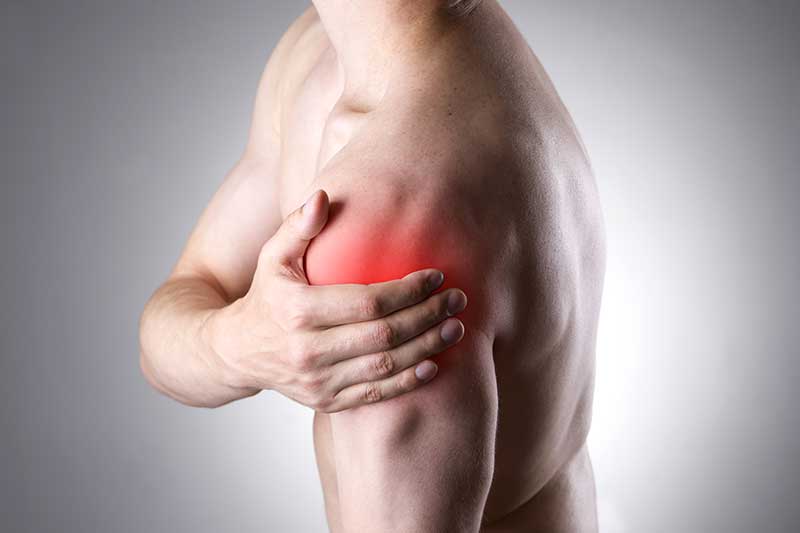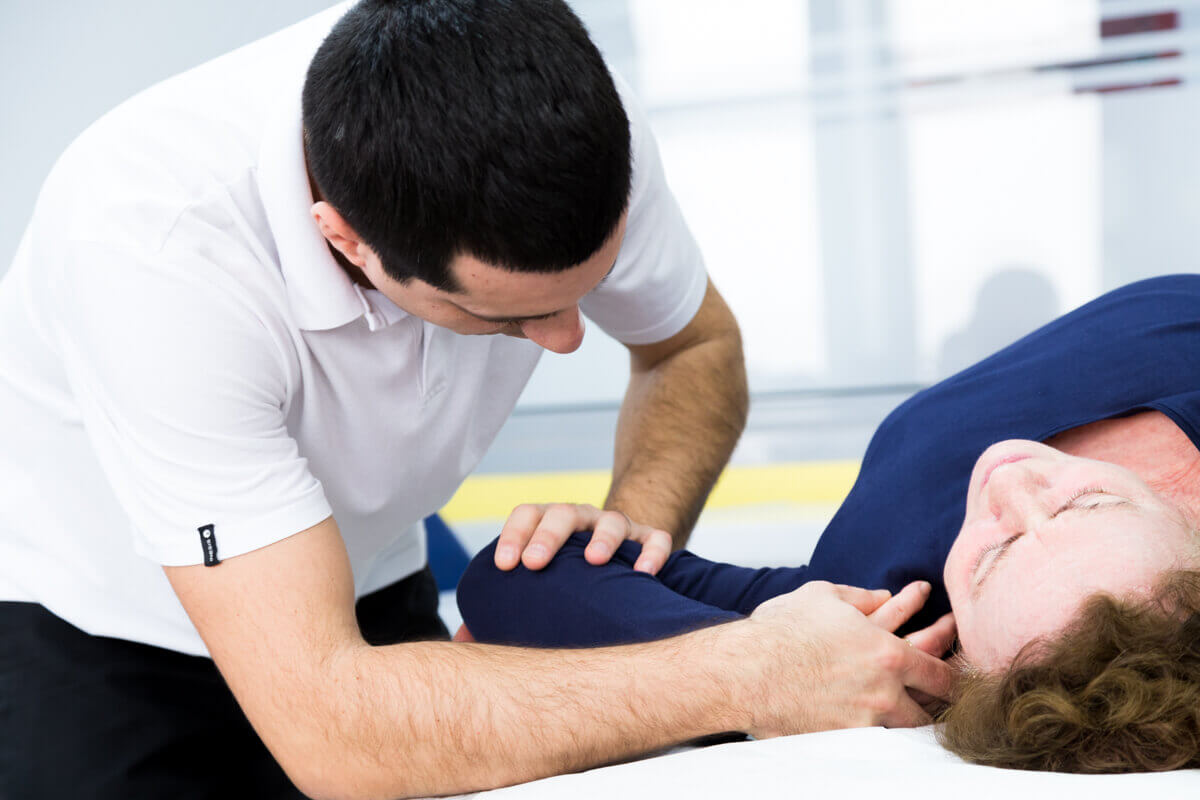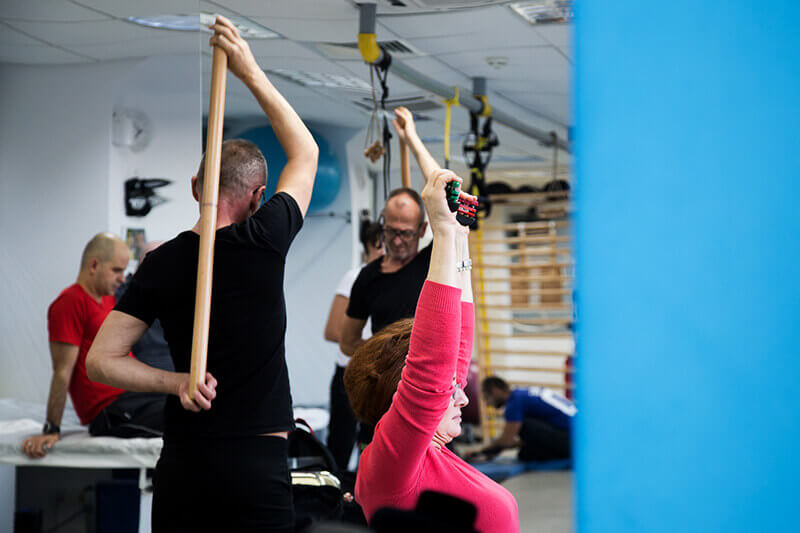See details
READ MORE
Postoperative protocol for rotator cuff recovery
Shoulder injuries are difficult to treat because the shoulder movement is permanent, a situation that involves exacerbation of pain and possible aggravation of the existing injury. A second reason would be that the shoulder joint is less stable than most other joints in the body, a feature of biomechanics needed to perform the multitude of movements at this level. In other words, the shoulder sacrifices stability in favor of mobility, being frequently prone to injuries.Most joints are stabilized by ligaments. The stability of the shoulder is conferred by the rotator cuff, by the capsule and the periarticular ligaments, and by the other muscles in the vicinity of the joint.
The rotator cuff is made up of four muscles that surround the shoulder joint similar to a cuff: subscapular, supraspinatus, infraspinatus, and ms. teres minor. The supraspinatus initiates the lifting movement of the arm (abduction). The infraspinatus and the teres minor make the external rotation of the arm. These four muscles act as a unit, rather than each individually, to maintain the dynamic stability of the shoulder. At the same time, they allow the arm to be raised.
Rotator cuff injuries and treatment options
The rotator cuff can rupture through acute trauma, such as lifting weights or falling on the shoulder or elbow. Immediately, the patient describes the decrease in strength in the shoulder and pain when mobilizing it. A ruptured rotator cuff secondary to acute trauma is best treated surgically. The rotating cap can also break due to secondary changes. This type of lesion can also be repaired surgically, but there are also cases in which its suture is not indicated. However, if the injury causes severe pain and functional disabilities, surgery is the best way to treat the pain and improve the functionality of the shoulder. If a rotator cuff injury is not repaired, the shoulder will develop degenerative changes over time.General considerations:
- Active mobilization of the glenohumeral joint to prevent capsular adhesions is essential.
- This early mobilization is done in a way that does not completely involve the musculature: supraspinatus - avoidance of adduction over the midline and external rotation.
- DO NOT raise the affected arm above 70 degrees any first 4 weeks postoperatively.
- DO NOT lift objects over 5 kilograms with the affected arm for the first 6 weeks.
- Avoid grabbing movements and external/internal rotation for the first 6 weeks.
- Apply ice 3-5 times (15 minutes at each application) a day to control inflammation and swelling
- A shoulder sling with an abduction pillow is used for 4 weeks after surgery. Wearing the sling during sleep is optional, depending on comfort.
- Maintain a correct shoulder posture at all times and especially during sling use.
.jpg)
Week 0 - 2
Manual:
- Tissue mobilization, massage to control edema
- Passive mobilization of the shoulder joint
Exercises (3 times a day)
- Pendulum exercises,
- Pressing the ball,
- Training the triceps and biceps muscles with Theraband,
- Passive flexion with pulleys and adduction (scapular plane) 0-60 degrees,
- Isometric abduction of the shoulder, adduction, extension, and flexion with the arm next to the body
- Neck stretching for comfort.
Objectives:
- Reduction of pain and edema.
- Passive shoulder flexion/adduction movement of 0-60 degrees.
- Active flexion / extension elbow movement.
- Using the sling for 4 weeks.

Week 2 - 4
Manual:
Treatment of neck and shoulder muscles for comfortExercises:
Continue the exercises performed in the first 2 weeksObjectives:
- Reduction of pain and edema.
- Passive mobilization of the shoulder flexion/adduction 0-70 degrees, external rotation at 30 degrees.
- Wearing the sling for 4 weeks.
Week 4 - 8
Manual:
Continue to mobilize soft tissues to increase the range of motion.Exercises:
You can start active movements of internal and external rotation, even against a small resistance (75% of the range of motion, as long as the patient's condition allows), without lifting the shoulder.Objectives:
- Complete passive range of motion in all planes - flexion, abduction, external rotation, and internal rotation
- Full active range of motion per week 12.
- No lifting above head level.
Week 11-12 and later:
- Start a more aggressive rotator cuff program as tolerated.
- Progressively perform resistance exercises, increasing weight according to tolerance
- Continue to look for a full range of shoulder movement in all planes
- Increase strength and preparation for the gradual return to current activities and sports.
- The return to specific sports is determined by the physical therapist by functional testing specific to the sport in question.
Objectives:
- Increase endurance.
- Full range of motion.
- Start returning to sports training.
SUCCESSFUL RECOVERY STORIES

MAKE AN APPOINTMENT
CONTACT US
MAKE AN APPOINTMENT
FOR AN EXAMINATION
See here how you can make an appointment and the location of our clinics.
MAKE AN APPOINTMENT







































































































































